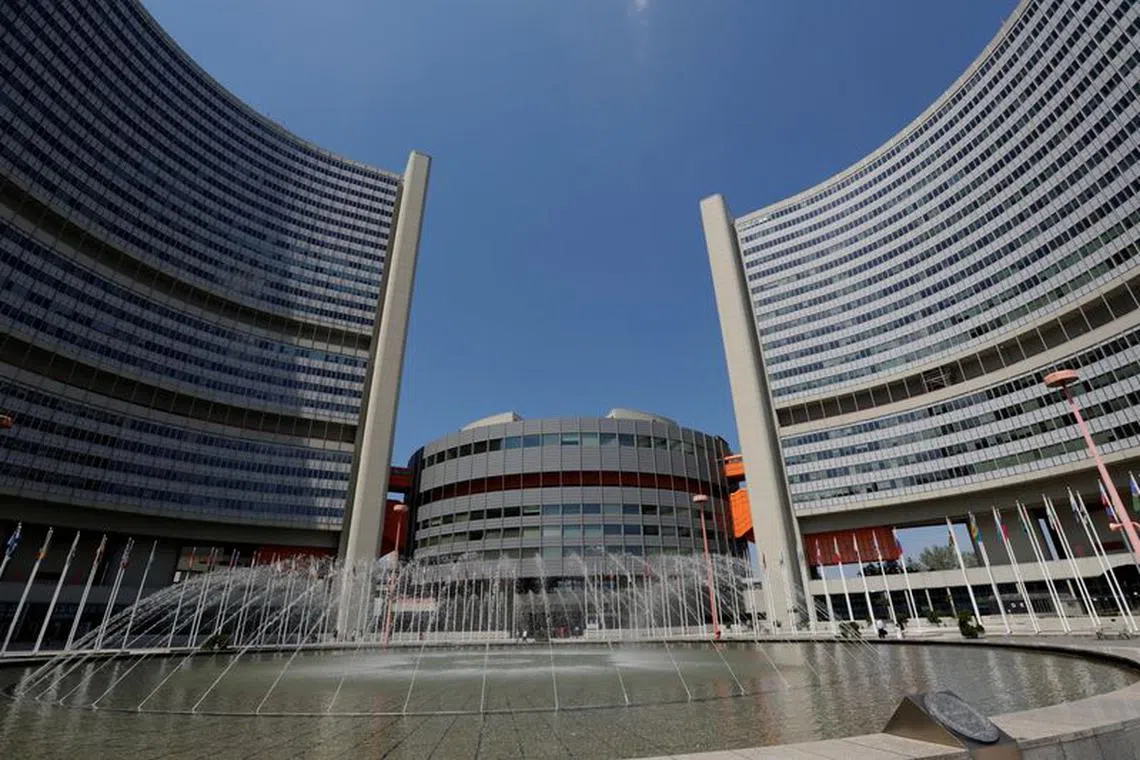Second North Korean nuclear reactor appears to be operational, IAEA says
Sign up now: Get insights on Asia's fast-moving developments

The IAEA has not had access to North Korea since Pyongyang expelled its inspectors in 2009.
PHOTO: REUTERS
Follow topic:
VIENNA – A new reactor at North Korea’s Yongbyon nuclear complex appears to be operating for the first time, the United Nations nuclear watchdog and independent experts said on Dec 21, which would mean an additional potential source of plutonium for nuclear weapons.
North Korea has for years used spent fuel from a five-megawatt nuclear reactor at Yongbyon to produce plutonium for its nuclear arsenal, but a telltale discharge of warm water from a larger light-water reactor (LWR) suggests that is now coming online, too, the International Atomic Energy Agency (IAEA) said.
“The discharge of warm water is indicative the reactor has reached criticality,” IAEA chief Rafael Grossi said in a statement, meaning the nuclear chain reaction in the reactor is self-sustaining.
The IAEA has not had access to North Korea since Pyongyang expelled its inspectors in 2009. The agency now observes the country from afar, mainly using satellite imagery.
Without access, the IAEA could not confirm the reactor’s operational status, Dr Grossi said.
The IAEA says it has observed a strong outflow of water from the light-water reactor’s cooling system since October, suggesting ongoing commissioning of the reactor.
More recent indications were that the water was warm, Dr Grossi added.
“The LWR, like any nuclear reactor, can produce plutonium in its irradiated fuel, which can be separated during reprocessing, so this is a cause for concern,” he said, adding that the advancement of North Korea’s nuclear programme was “deeply regrettable”.
Researchers at the James Martin Centre for Nonproliferation Studies in California also concluded the reactor is most likely operating, adding that it may be “a significant source of nuclear material” for the nuclear weapons programme, which is banned by UN Security Council resolutions.
In an April report, the D.C.-based Institute for Science and International Security estimated the light-water reactor “could allow a surge in plutonium quantities at an estimated rate of about 20kg of plutonium per year, a rate four to five times larger than that of the small adjacent reactor”.
That study concluded North Korea may have anywhere from 31 to 96 nuclear warheads, depending on the types of devices being built and which fuel is being used.
News of the reactor’s operation comes as North Korean leader Kim Jong Un said an intercontinental ballistic missile (ICBM) test this week showed his country would not hesitate to launch a nuclear attack if an enemy provokes it with strategic weapons.
North Korea has conducted six nuclear tests; the last one was in 2017.
Activity at North Korea’s nuclear test site at Punggye-ri has led to months of speculation that it could resume nuclear weapon testing as it seeks to miniaturise warheads for use in ballistic missiles. REUTERS

